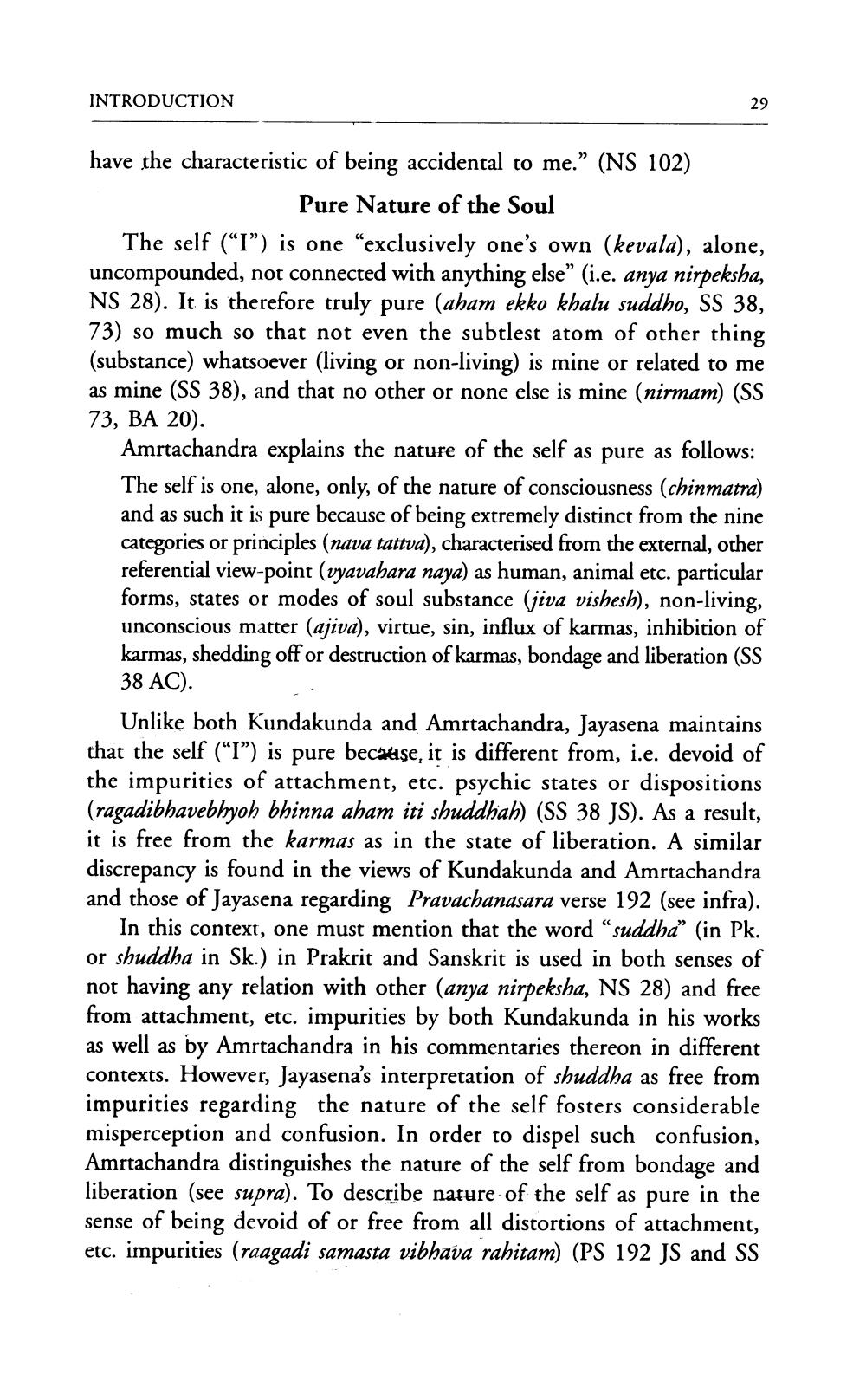________________
INTRODUCTION
have the characteristic of being accidental to me.” (NS 102)
Pure Nature of the Soul The self (“I”) is one “exclusively one's own (kevala), alone, uncompounded, not connected with anything else” (i.e. anya nirpeksha, NS 28). It is therefore truly pure (aham ekko khalu suddho, SS 38, 73) so much so that not even the subtlest atom of other thing (substance) whatsoever (living or non-living) is mine or related to me as mine (SS 38), and that no other or none else is mine (nirmam) (SS 73, BA 20).
Amrtachandra explains the nature of the self as pure as follows: The self is one, alone, only, of the nature of consciousness (chinmatra) and as such it is pure because of being extremely distinct from the nine categories or principles (nava tattva), characterised from the external, other referential view-point (vyavahara naya) as human, animal etc. particular forms, states or modes of soul substance (jiva vishesh), non-living, unconscious matter (ajiva), virtue, sin, influx of karmas, inhibition of karmas, shedding off or destruction of karmas, bondage and liberation (SS 38 AC).
Unlike both Kundakunda and Amrtachandra, Jayasena maintains that the self (“I”) is pure because it is different from, i.e. devoid of the impurities of attachment, etc. psychic states or dispositions (ragadibhavebhyoh bhinna aham iti shuddhah) (SS 38 JS). As a result, it is free from the karmas as in the state of liberation. A similar discrepancy is found in the views of Kundakunda and Amrtachandra and those of Jayasena regarding Pravachanasara verse 192 (see infra).
In this context, one must mention that the word “suddha" (in Pk. or shuddha in Sk.) in Prakrit and Sanskrit is used in both senses of not having any relation with other (anya nirpeksha, NS 28) and free from attachment, etc. impurities by both Kundakunda in his works as well as by Amrtachandra in his commentaries thereon in different contexts. However, Jayasena's interpretation of shuddha as free from impurities regarding the nature of the self fosters considerable misperception and confusion. In order to dispel such confusion, Amrtachandra distinguishes the nature of the self from bondage and liberation (see supra). To describe nature of the self as pure in the sense of being devoid of or free from all distortions of attachment, etc. impurities (raagadi samasta vibhava rahitam) (PS 192 JS and SS




